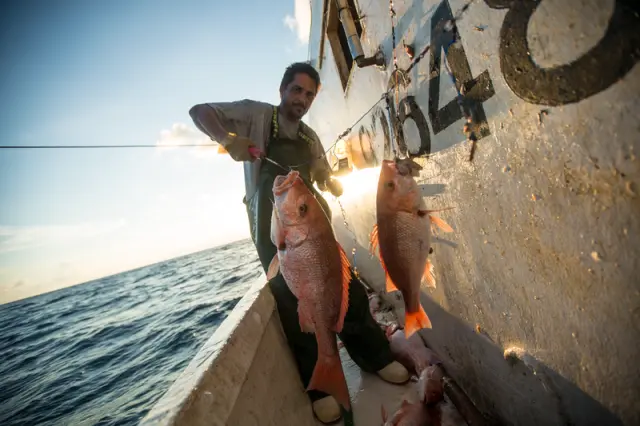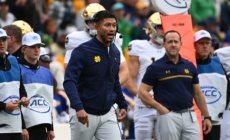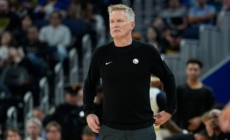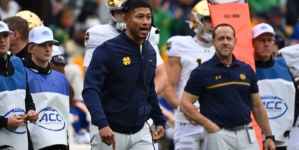-
3 Ways Men and Women Can Protect Fertility, According to Endocrinologists - 21 mins ago
-
A Year After Toppling Assad, Syria’s Sharaa Is Winning Over the White House - 56 mins ago
-
Winter storm warnings for 6 states as 10 inches of snow to hit - 2 hours ago
-
Hong Kong Holds Vote as Officials Move Against ‘Anti-China’ Elements - 2 hours ago
-
Kirk Herbstreit Predicts Bad News for Notre Dame as CFP Selection Looms - 2 hours ago
-
Hong Kong Man Arrested After Posting Online About Deadly Fire - 2 hours ago
-
Zac Gallen Predicted To Sign $135M Deal With NL Club Despite Cubs Rumors - 3 hours ago
-
How Has Congestion Pricing Changed Your Year? - 3 hours ago
-
Ancient African city rises from ashes of colonialism - 3 hours ago
-
Fire in Goa, India, Kills at Least 25 - 4 hours ago
Forget the Guilt—Eating Seafood Can Help Save the Ocean | Opinion
October is National Seafood Month, and across the country Americans are digging into fish tacos, grilling salmon and peeling shrimp. For many, shopping, cooking and eating blue foods—foods from our oceans, lakes and rivers—comes with some hesitation: Am I eating the “right” seafood? Fresh or frozen, wild or farmed … there is a lot to unpack.
The guilt comes from years of dire headlines: fishing boats hauling in too much, too quickly, fish populations unable to keep up; and fishing seasons so short that crews risked their lives just to bring in a paycheck. By the early 2000s, overfishing was rampant, fishing became the most dangerous job in America and our oceans were on the brink of collapse. Aquaculture, which is farming fish and aquatic plants, came with its own set of issues surrounding sustainability, cost and guidelines. It struggled to take off.
On the wild side, government regulations that tried to help only fueled a reckless race to catch as much fish as possible: driving overfishing, unsafe conditions, lower incomes and an unstable seafood supply. Species were pushed to the brink, shoppers didn’t know what was safe to buy and coastal economies struggled.

What most people don’t know is that a quiet revolution has turned the tide on this once tragic tale. Over the past two decades, the U.S. has become a global leader in responsible, wild-caught seafood. And today, American policymakers, environmental organizations and businesses are working to make responsible aquaculture something we can be all in on too.
This turnaround for U.S. seafood was made possible because people who disagreed— fishermen, scientists, environmental advocates and policymakers—rolled up their sleeves to find common ground. Similarly, aquaculture leaders, environmentalists and scientists are now working together to provide even more safe and sustainable seafood for us to enjoy.
Many of our nation’s most iconic fisheries—including Gulf red snapper and West Coast groundfish—turned to a solution called “catch shares.” The idea is simple: let science determine how much can be caught each year, then give each fisherman or community a fair share of that total. That way, fishing could happen more safely, steadily and with less waste. As the fish populations grow, so does the science-based total allowable catch. It gives fishermen a strong reason to protect the ocean, not just for today, but for the future.
On the docks and at the seafood counter, the results are remarkable. More than 50 fish stocks have bounced back or are on track to recover. Some species rebounded even faster than expected, like Pacific ocean perch which recovered 34 years ahead of schedule. The National Oceanic and Atmospheric Administration (NOAA) reports 94 percent of assessed fisheries in the U.S. are now sustainable.
As the fish came back, so has employment—commercial fishing jobs grew 38 percent in the U.S. from 2011 to 2022. Fishing business costs have dropped by 80 percent in some cases, profits have grown and fishermen are no longer putting their lives on the line. Fishermen now see a future in an industry that had nearly collapsed.

This is great for consumers too. Fishermen are now able to focus on quality, not quantity. No more market gluts that spoil catches or result in mushy frozen filets. We get to savor pristine black cod, halibut, or Gulf grouper with texture that pops.
Aquaculture brings in even more options, lowers costs and supplies us with incredible product from well managed farms. Bipartisan congressional champions recently introduced the Marine Aquaculture Research for America (MARA) Act, to support ocean-based aquaculture guided by rigorous science and strong environmental monitoring. It’s supported by a broad coalition of industry leaders, environmentalists, chefs, fishermen and scientists—in a time that feels so divided, this is an awesome example of people coming together.
Chefs continue to be the bridge between docks and dinner plates, shaping demand for responsibly harvested seafood and telling the story of why it matters. When chefs commit to sustainable sourcing, diners learn that the “best” fish isn’t the rarest species flown halfway around the world; it’s often the local, abundant species caught right here in America.
What is your part in this story? Up to 90 percent of the seafood in the U.S. is imported—but it doesn’t have to be! Support restaurants and stores that source responsibly and locally. Many already do, and your interest helps keep them going. And cook more seafood at home. Across America, access to nutritious, sustainable blue foods is at its peak.
Seafood isn’t a guilty pleasure. It should be a larger part of our weekly meal planning. It’s also a reminder that we can fix things when we work together. So enjoy what the ocean offers and celebrate this quiet but powerful progress.
Amanda Leland is executive director of Environmental Defense Fund and coauthor of Sea Change.
Andrew Zimmern is a chef, restaurateur, TV host, food advocate and coauthor of The Blue Food Cookbook.
The views expressed in this article are the writers’ own.
Source link























